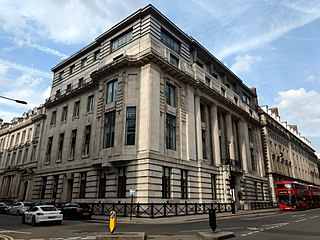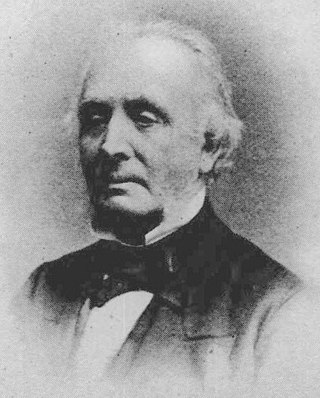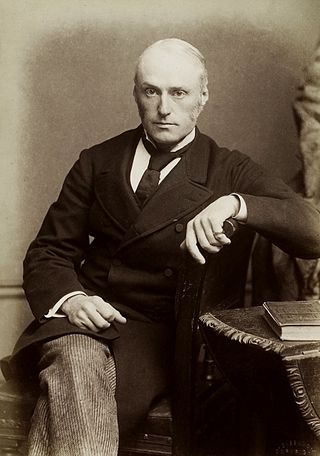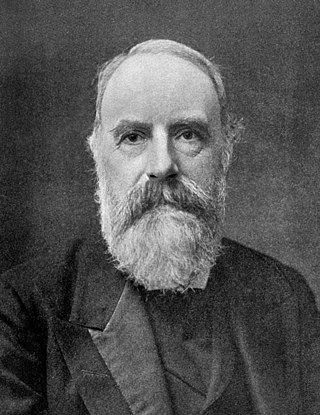Related Research Articles

Baron Monson, of Burton in the County of Lincoln, is a title in the Peerage of Great Britain. It was created in 18th century for Sir John Monson, 5th Baronet. The Monson family descends from Thomas Monson, of Carleton, Lincolnshire. He sat as Member of Parliament for Lincolnshire, Castle Rising and Cricklade. On 29 June 1611 he was created a Baronet, of Carleton in the County of Lincoln, in the Baronetage of England. His eldest son, the second Baronet, fought as a Royalist during the Civil War and also represented Lincoln in the House of Commons.

Sir William Jenner, 1st Baronet, GCB, QHP, FRCP, FRS was a significant English physician primarily known for having discovered the distinction between typhus and typhoid.
The Royal Medical and Chirurgical Society of London (RMCS), created in 1805 as the Medical and Chirurgical Society of London, was a learned society of physicians and surgeons, that received a Royal charter in 1834, and a supplement charter in 1907 to create the newly merged Royal Society of Medicine.

Sir Joseph Fayrer, 1st Baronet FRS FRSE FRCS FRCP KCSI LLD was a British physician who served as Surgeon General in India. He is noted for his writings on medicine, work on public health and his studies particularly on the treatment of snakebite, in India. He was also involved in official investigation on cholera, in which he did not accept the idea, proposed by Robert Koch, of germs as the cause of cholera.

The Royal Society of Medicine (RSM) is a medical society based at 1 Wimpole Street, London, UK. It is a registered charity, with admission through membership.

Edward Headlam Greenhow FRS, FRCP was an English physician, epidemiologist, sanitarian, statistician, clinician and lecturer.

Sir Robert Christison, 1st Baronet, was a Scottish toxicologist and physician who served as president of the Royal College of Physicians of Edinburgh and as president of the British Medical Association (1875). He was the first person to describe renal anaemia.

The Royal Historical Society, founded in 1868, is a learned society of the United Kingdom which advances scholarly studies of history.

Thomas Michael Greenhow MD MRCS FRCS was an English surgeon and epidemiologist.

Rear admiral Sir William Watson Cheyne, 1st Baronet, was a Scottish surgeon and bacteriologist who pioneered the use of antiseptic surgical methods in the United Kingdom.

Sir William Henry Broadbent, 1st Baronet was an English neurologist who was a leading British authority in the field of cardiology and neurology. He also performed research involving diseases such as tuberculosis and cancer. In 1881 he was elected President of the London Medical Society and in 1887 President of the Clinical Society of London. Broadbent was a Physician-Extraordinary to Queen Victoria and Physician-in-Ordinary to King Edward VII and the Prince of Wales.

The Medical Society of London is one of the oldest surviving medical societies in the United Kingdom.

Sir Norman Moore, 1st Baronet, FRCP was a British doctor and historian, best known for his work with the Royal College of Physicians and his writings on history of medicine. Born in Higher Broughton, Salford, Lancashire, the only child of abolitionist and social reformer Rebecca Moore, née Fisher, of Limerick and the noted Irish political economist Robert Ross Rowan Moore, Moore worked in a cotton mill before studying natural sciences in Cambridge and then going on to study comparative anatomy at St Bartholomew's Hospital.
The Pathological Society of London was founded in 1846 for the "cultivation and promotion of pathology by the exhibition and description of specimens, drawings, microscopic preparations, casts or models of morbid parts."

Thomas Watson, was a British physician who is primarily known for describing the water hammer pulse found in aortic regurgitation in 1844. He was president of the Royal College of Physicians from 1862 to 1866.
The Epidemiological Society of London was a British medical society founded in 1850 with the objective of investigating the causes and conditions which influence the origin, propagation, mitigation, and prevention of epidemic disease. In 1907 it merged with the Royal Medical and Chirurgical Society of London and became a part of the Royal Society of Medicine as the Epidemiological Section.

Sir Richard Douglas Powell, 1st Baronet, was a British physician, Physician Royal to Queen Victoria, Edward VII and George V, president of various medical societies, etc.

Sir William Selby Church, 1st Baronet, was a British physician to St Bartholomew's Hospital, president of the Royal College of Physicians from 1899 to 1905 and president of the Royal Society of Medicine from 1907 to 1909 and also in 1893. He is best remembered for his ability to direct policy of the associations he belonged to.
The Obstetrical Society of London was formed in 1858 and merged in 1907 with the Royal Medical and Chirurgical Society of London to form the Royal Society of Medicine (RSM).

The History of Medicine Society (HoMS), at the Royal Society of Medicine (RSM), London, was founded by Sir William Osler in 1912, and later became one of the four founder medical societies of the British Society for the History of Medicine.
References
- ↑ "Royal Society of Medicine Records". 1907–1975. Archived from the original on 24 June 2023. Retrieved 24 June 2023.
- ↑ "The Clinical Society of London" . Retrieved 2012-10-24.
- ↑ "Transactions of the Clinical Society of London". 38. 1905.
{{cite journal}}: Cite journal requires|journal=(help)